When do you feel most creative? Does inspiration just strike? Or was it there all along and do we just have to create a space for it? As creatives, we often wait for a ‘spark’ of inspiration or feel like we need a ‘creative high’ to help us make new things. Yet, we’re the one creating. What we usually need is to create an intentional space for creating to help us get started.
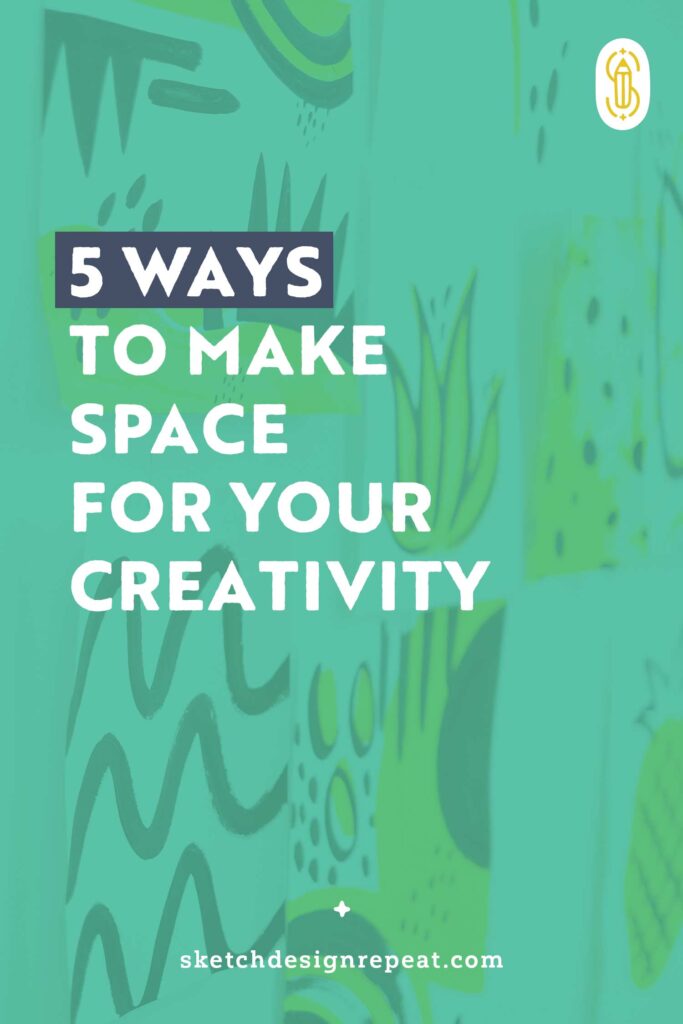
We all have the same 24 hours in a day. So what we need to do is learn to manage our time better and make space for the things that matter. Implementing a few simple habits can help you work more productively on high-stakes client projects, stressful deadlines, and big, ambitious goals you want to tackle. You’ll develop a more meaningful structure in the day, work more efficiently and have more time and space for your creative energy. There are five things I implemented that have helped me make more space for my creative process.
#1: The Easy Stuff
I’m a big fan of planning and time blocking to make sure I don’t fall into the trap of procrastinating on important projects. The idea of tracking your time might sound like a pain, but for me, it was a real eye-opener and helped me with making time for important, meaningful projects. At the end of each week, I look at what I spent my time on and track every type of task in a spreadsheet (I use a Google spreadsheet, but there are lots of great time-tracking programs out there).
By holding myself more accountable, I was able to cut out some of the easy ‘fluff’ tasks I busied myself with (like responding to emails three times a day) and only kept the ones I really needed to do. Instead, I replaced them with more time for creativity and development. Most actions can wait, but creativity requires energy and time, so we should welcome that whenever we can.
Tracking your hours will also teach you when you are most productive and how you can create a better schedule for yourself moving forward. It helps to see where you are wasting time and how to simplify or declutter your tasks. If you’re working with clients, it’ll also help you to bill your hours correctly, and set expectations for yourself and the client. This doesn’t mean you have to make a perfect schedule for yourself; just being aware of how much time each task takes can change the way you start your day. Don’t get distracted by the easy tasks. Understanding and managing your time better will help you make more space for the stuff that matters.
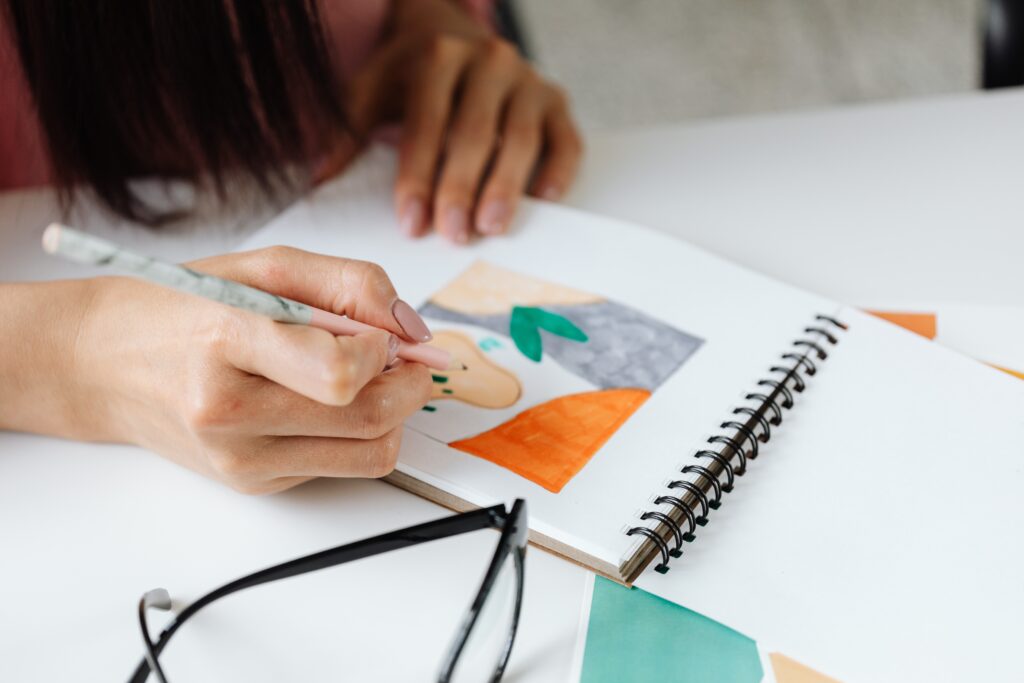
#2: Warmups
As creatives, imposter syndrome can be a real issue; we somehow lose all confidence in our creative abilities, especially when starting a new, daunting project. In Dutch, there’s a word to convey the fear we feel when we have to get over that first hurdle: ‘drempelvrees’ — ‘fear of thresholds.’ Getting over the hurdle of starting a new project is difficult, that’s why we need to prepare ourselves physically and mentally to transition into creating mode.
Before working on a high-stakes client project or big deadline, take the time to get into the right mindset by warming up (the same way a runner will warm up before a race!). Set a timer and do short warm up exercises. Start designing in your favorite program or drawing in a sketchbook. During this exercise, you can just focus on creating and experimenting. The best time to practice is when there’s nothing on the line. It’s not about what you are making, but the fact that you’re getting into a creative mindset.
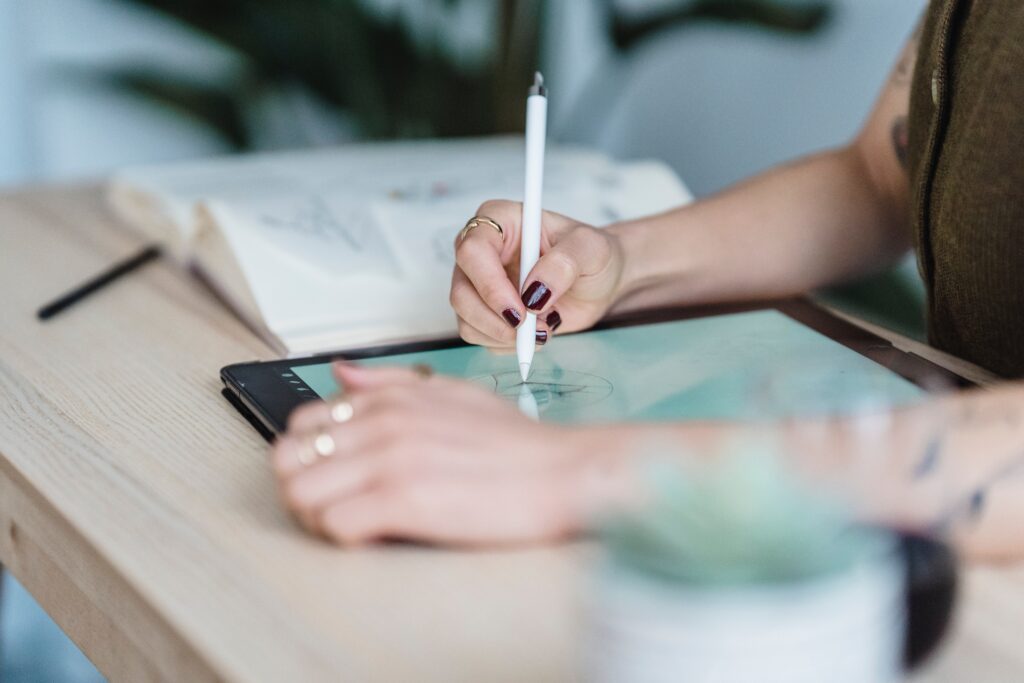
Doing this has helped me to reframe big, daunting projects. I have found it much easier to start creating this way because I’m not waiting for inspiration or motivation to help me get started. By starting easy, everything else that comes after seems less scary, full of possibilities and way more fun to do.
Related Article: 10 Ways to Help Remove Artists Block
#3: Cooldowns
How many times do you jump from one task to another? I admit, sometimes I rush to finish the end of a project, an email, or proposal. I’m already thinking about the next task because I want to move forward and focus on something else. Yet, just like warm-ups before big tasks, we also need cooldowns. Not knowing when to take breaks causes more stress and leads to making mistakes that could’ve been avoided. By allowing short breaks to review your work, you can avoid errors and ultimately save a bit of time. If we’ve already done the hard work, why wouldn’t we allow ourselves to take time to finish it up properly?
Being mindful of what you’re doing in the moment gives you more focus and ultimately makes you more productive. Slowing down and working with a bit more patience means less time fixing things afterwards. Before sending out a long email, take a moment, and read it again. Before sending work to a client, take a few extra minutes to review your work before sending it out. Try to find some extra breathing room in your schedule as well; that’ll give you space to deal with unexpected tasks. Between tasks, take an extra 5 or 10-minute break. If everything goes to plan and you have time left, that’s a bonus! You can use that for your creativity.
#4: Stop Reinventing the Wheel
If you’re doing something more than once, create a system for it — a process, a document, a file, a folder, or a template. This way, a lot of business tasks are taken care of automatically and are easier to work with. Your time is too valuable to recreate easy tasks every time you do them. Besides, you’re a designer or illustrator; your most important work requires big solutions and all your creative energy.
Following a streamlined process means you can move quicker; it requires less thinking and gives more consistent results. Setting rules will also make it easier for you to stick to your existing workflow and stop you from reinventing the wheel regularly. (And from getting distracted by little things that can be fixed. There’s always something that can be improved, but that doesn’t mean it’s a priority!) A bonus is that having systems in place will make it easier to communicate with clients, collaborators, or virtual assistants in the future.
Don’t use your energy on tasks that can be automated. Instead, use it to focus on your creativity wherever you can. You can make checklists and create templates for things you do often. When you need to start a new project, you’ll be able to follow a guide. Apart from recording your creative process and workflow, there are plenty of things you can automate and schedule too.
I use Mailerlite to set up and schedule newsletters, Calendly to set up meetings with clients quickly, Trello for managing to-do lists and projects, and Google calendar to time block my week. Other things you can do to save you time are setting up automated email responses, a social media scheduler, accounting software that automates invoices, and more. There is no right or wrong when it comes to organizing everything. As long as the system works for you, it’s good enough.
#5: Experiment
It can be difficult to find the time to work on our own projects, but developing and experimenting are important. It’s these moments of creation purely for yourself that are key, because you can make a lot of progress creatively and find your best ideas.
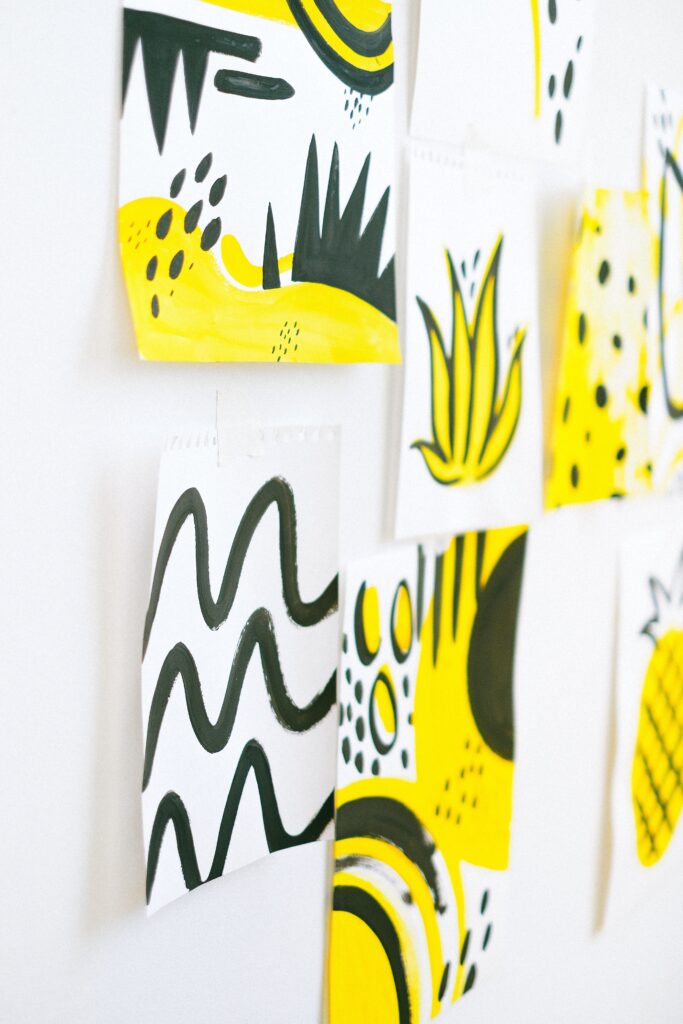
During this time, you can perfect the technical skills you already have, or focus on a new tool or technique entirely. Sometimes, you can get so stuck in your box, that you forget that creativity can mean a lot of different things. Even if these activities are not directly related to what you’re already doing, as long as they are in the creative sphere, you are training your brain.
I love taking art classes that are purely about art, and not illustration, to give myself a break. You can study work that you love looking at, go to a museum, and find new inspiration. You can also start a personal project and set rules for yourself as if you are doing a client project. I love working on personal series that I can keep adding work to.
Creativity is an infinite journey of growth and learning. Dedicate time to practice and experiment with different techniques, tools, and approaches as often as possible in order to expand your level of comfort.
There is not a one size fits all approach to making space for your creativity. So, experiment to figure out your personal creative workflow and embrace your unique preferences. Some aspects of your creative environment might be consistent, and other parts will change or have to be tweaked. Building habits to save valuable time and making space for the process of creation will help you to channel your creative energy the right way!
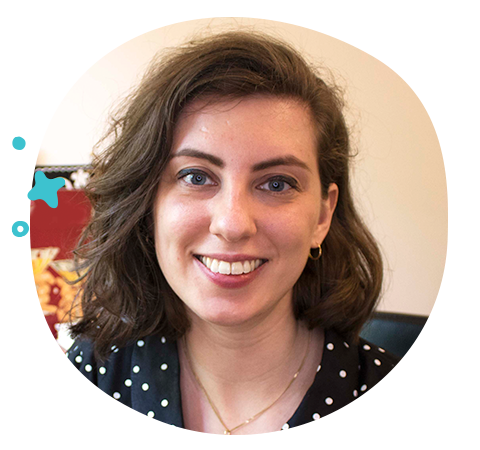
Written by Claire van Kuijck
Website: clairemakesthings.es
Instagram: @claire.makesthings
Claire, of Claire Makes Things, is an illustrator and teacher from the Netherlands, based in Madrid, Spain. She creates murals, chalkboard designs, greeting card designs and more, and teaches illustration and graphic design. She loves all things retro, cocktails, and riding her motorbike.